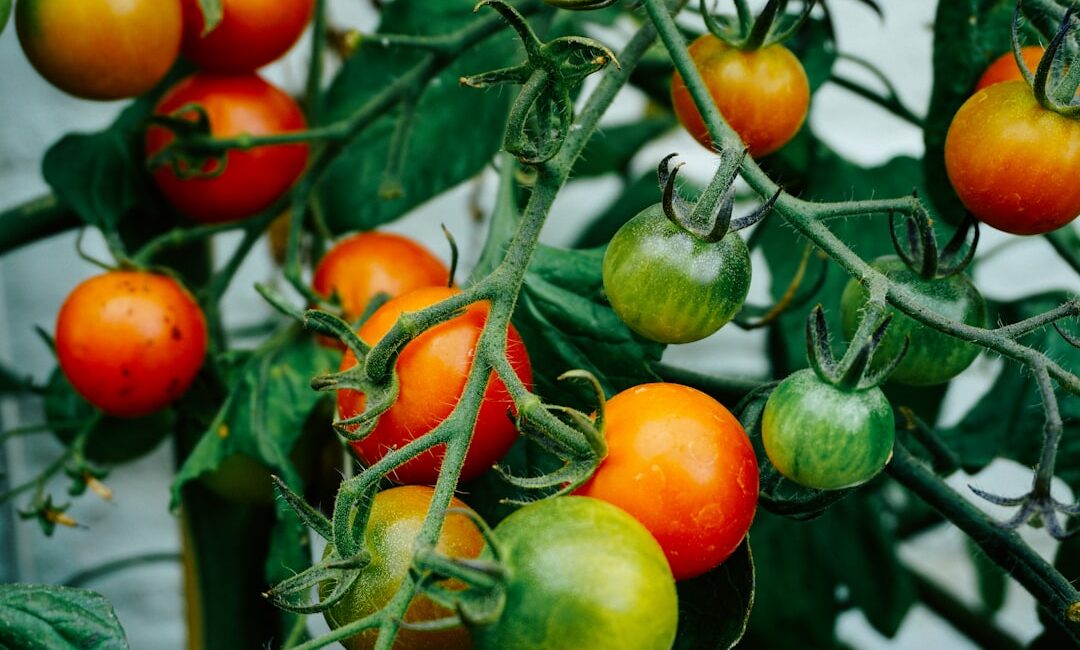Summary
Growing tomatoes is a popular hobby for many gardeners, but successfully cultivating them requires more than just planting a seed and watering it. To grow delicious and healthy tomatoes, gardeners need to understand the plant’s needs, from the right soil and sunlight to proper care and maintenance. Soil preparation is a critical factor, involving testing pH levels, adding organic matter like compost or manure, and loosening the soil to a depth of at least 12 inches to allow for proper root growth. By creating a fertile and well-draining environment, gardeners can set their tomatoes up for success and enjoy a bountiful harvest. Effective soil preparation methods and selecting the right tomato variety for specific climate and growing conditions are essential. Additionally, a well-planned watering schedule is crucial, striking a balance between providing enough moisture to support plant growth and avoiding overwatering, which can lead to problems like root rot and nutrient deficiencies. Gardeners can use techniques like drip irrigation and mulching to conserve water and reduce evaporation. Pest control is also vital, requiring a combination of preventative measures, such as physical barriers and companion planting, and organic control methods, like introducing beneficial insects and using neem oil. Pruning is another key step, promoting healthy growth and maximizing yields by removing weak or damaged stems and leaves, and allowing the plant to focus its energy on producing fruit.
Providing the right conditions for growth is crucial, including adequate sunlight, water, and nutrients, which are essential for healthy plant development. When it comes to growing tomatoes, gardeners should focus on creating a supportive environment that allows the plants to grow and flourish, and this involves selecting the right variety, preparing the soil, and providing necessary support. Proper care and maintenance, such as pruning, mulching, and monitoring for pests and diseases, also play a critical role in promoting healthy growth and maximizing yields. By implementing these strategies, gardeners can take their tomato plants to the next level and enjoy a successful and rewarding gardening experience, ultimately leading to a bountiful harvest of delicious and healthy tomatoes. The key to successfully growing tomatoes lies in understanding the plant’s needs and providing the right conditions for growth, and with the right approach, gardeners can reap the benefits of their hard work and enjoy a successful harvest of fresh, homegrown tomatoes.
Growing tomatoes is a popular hobby for many gardeners, and for good reason – there’s nothing quite like biting into a freshly picked, juicy tomato from your own garden. But successfully growing tomatoes requires more than just planting a seed and watering it. It requires a deep understanding of the plant’s needs, from the right soil and sunlight to proper care and maintenance. This article will cover the basics of growing tomatoes, including how to choose the right variety, how to prepare the soil, and how to care for your plants to ensure a bountiful harvest. By the end of this article, readers will have a clear understanding of what it takes to grow delicious and healthy tomatoes and will be ready to start their own tomato garden, leading them to a successful and rewarding gardening experience.
Soil Preparation

When it comes to growing tomatoes, one of the most critical factors to consider is soil preparation. The soil provides the foundation for the entire growth process, and its quality can greatly impact the health and productivity of the plants. Soil preparation methods vary depending on the type of soil and the specific needs of the tomatoes, but they all share the common goal of creating a fertile and well-draining environment that allows the roots to grow deep and the plants to thrive. Key aspects of soil preparation include testing the pH levels, adding organic matter such as compost or manure, and loosening the soil to a depth of at least 12 inches to allow for proper root growth. By understanding the importance of soil preparation and taking the necessary steps to create a optimal growing environment, gardeners can set their tomatoes up for success and enjoy a bountiful harvest.
By implementing effective soil preparation methods, gardeners can create an ideal environment for their tomatoes to thrive. Important details to consider include the pH level of the soil, as tomatoes prefer a slightly acidic to neutral soil pH, and the addition of organic matter, such as compost or well-rotted manure, to improve soil structure and fertility. In practical terms, this means testing the soil regularly to determine its pH level and nutrient content, and amending the soil as necessary to create a balanced and fertile growing environment. With these soil preparation basics in place, gardeners can move on to the next step in growing delicious and healthy tomatoes: selecting the right tomato variety for their specific climate and growing conditions, which will be discussed in the following section on tomato plant selection.
Watering Schedule

When it comes to growing tomatoes, a well-planned watering schedule is essential for promoting healthy growth and maximizing yields. The key to a successful watering schedule is to strike a balance between providing enough moisture to support plant growth and avoiding overwatering, which can lead to a range of problems, including root rot and nutrient deficiencies. A good watering schedule will take into account factors such as the type of soil, the climate, and the stage of plant growth, and will be tailored to meet the specific needs of the tomato plants. By understanding the importance of watering and implementing a well-planned watering schedule, gardeners can help their tomato plants thrive and produce a bountiful harvest. This includes considering watering techniques such as drip irrigation and mulching to conserve water and reduce evaporation, which will be discussed in more detail in the following paragraph.
By implementing a well-planned watering schedule, gardeners can help their tomato plants receive the right amount of moisture at the right time, promoting healthy growth and maximizing yields. Important details to consider include watering frequency, which will depend on factors such as weather conditions and soil type, and watering techniques, such as drip irrigation and soaker hoses, which can help reduce evaporation and runoff. In terms of practical applications, gardeners can use moisture meters to monitor soil moisture levels and adjust their watering schedule accordingly, and can also consider using mulch to retain moisture in the soil and reduce the need for frequent watering. By following these tips and techniques, gardeners can create a watering schedule that meets the unique needs of their tomato plants, and can look forward to a bountiful harvest of delicious and healthy tomatoes, which will be further supported by the fertilization best practices discussed in the next section.
Pest Control

When it comes to growing tomatoes, pest control is a crucial aspect of maintaining a healthy and productive garden. Tomato plants are susceptible to a variety of pests, including aphids, whiteflies, and hornworms, which can cause significant damage to the plants and reduce yields. Effective pest control requires a combination of preventative measures, such as using physical barriers and companion planting, and organic control methods, such as introducing beneficial insects and using neem oil. By understanding the key aspects of pest control and implementing a comprehensive strategy, gardeners can protect their tomato plants from pests and diseases, and enjoy a bountiful harvest of delicious and healthy tomatoes. This includes being aware of the common pests that can affect tomato plants and taking steps to prevent infestations, which will be discussed in more detail in the following paragraph.
In terms of practical applications, gardeners can use a variety of organic pest control methods to manage pest populations and prevent infestations. This includes introducing beneficial insects, such as ladybugs and lacewings, which feed on common tomato pests, and using physical barriers, such as row covers and copper tape, to prevent pests from reaching the plants. Additionally, gardeners can use neem oil and diatomaceous earth to control pest populations and prevent infestations. By implementing these pest control strategies and maintaining a healthy and balanced garden ecosystem, gardeners can reduce their reliance on chemical pesticides and fertilizers, and enjoy a bountiful harvest of delicious and healthy tomatoes. This will also set the stage for the next section, which will discuss prevention strategies for common tomato diseases, and provide gardeners with a comprehensive understanding of how to protect their plants and ensure a successful harvest.
Pruning Tips

When it comes to growing tomatoes, pruning is a crucial step in promoting healthy growth and maximizing yields. Pruning involves removing certain parts of the plant, such as weak or damaged stems and leaves, to allow the plant to focus its energy on producing fruit. The key aspects of pruning tips include understanding the different types of pruning, such as topping and thinning, and knowing when to prune, which is typically during the early growing season. By pruning their tomato plants effectively, gardeners can improve air circulation, reduce the risk of disease, and increase the overall productivity of their plants. This will be further explored in the following paragraph, which will discuss the important details and practical applications of pruning tips for growing tomatoes.
By implementing pruning techniques effectively, gardeners can promote healthy growth, increase yields, and improve the overall appearance of their tomato plants. Important details to consider include pruning tools, such as sharp scissors or pruning shears, and pruning schedules, which can vary depending on the type of tomato plant and the stage of growth. In terms of practical applications, gardeners can use pruning tips to remove weak or damaged stems, promote air circulation, and increase sunlight penetration, all of which can help to prevent disease and promote healthy growth. By following these pruning tips and techniques, gardeners can take their tomato plants to the next level and enjoy a bountiful harvest of delicious and healthy tomatoes, which will be further enhanced by the fertilization best practices and prevention strategies discussed in the next sections.
Key Takeaways
To grow delicious and healthy tomatoes, gardeners must start with soil preparation, testing pH levels, adding organic matter, and loosening soil to 12 inches deep. Selecting the right variety for the climate and conditions is also crucial. Providing adequate sunlight, water, and nutrients is essential for healthy growth, and a well-planned watering schedule must consider soil type, climate, and plant stage. Effective pest control using physical barriers and organic methods, combined with pruning techniques like topping and thinning, promotes healthy growth and maximizes yields. Proper care and maintenance enable gardeners to identify and address issues early, leading to a bountiful harvest of delicious and healthy tomatoes, and a successful and rewarding gardening experience. By focusing on these key factors, gardeners can create an ideal environment for their tomato plants to thrive.
People Also Ask
What is the trick to growing tomatoes?
The trick to growing tomatoes lies in providing the right conditions for the plants to thrive. This includes adequate sunlight, water, and nutrients, as well as proper care and maintenance. Gardeners should also pay attention to the soil quality and temperature to ensure optimal growth. By understanding the plant’s needs and providing the right environment, gardeners can set themselves up for a successful harvest of delicious and healthy tomatoes.
Gardeners can also use various techniques to enhance their tomato plants’ growth, such as pruning and training the plants to maximize yields. Additionally, using organic fertilizers and companion planting can help to promote healthy growth and prevent pests and diseases. By following these tips and tricks, gardeners can enjoy a bountiful harvest of fresh, homegrown tomatoes and experience the rewards of growing tomatoes successfully.
What should not be planted next to tomatoes?
When it comes to growing tomatoes, there are certain plants that should not be planted next to them. These include members of the Brassica family, such as broccoli and cauliflower, as well as potatoes and eggplants. These plants can be susceptible to similar diseases and pests, and planting them next to tomatoes can increase the risk of infection. Additionally, fennel and kohlrabi can inhibit the growth of tomato plants and should be avoided.
Gardeners should also avoid planting members of the nightshade family, such as peppers and okra, next to tomatoes. These plants can be hosts to similar pests and diseases, and can spread them to the tomato plants. Instead, gardeners can plant companion plants such as basil and marigold next to their tomatoes, which can help to repel pests and improve growth. By choosing the right plants to grow next to their tomatoes, gardeners can create a healthy and thriving garden ecosystem.
Why put an egg in the hole when planting tomatoes?
When planting tomatoes, some gardeners recommend putting an egg in the hole to help promote healthy growth. The idea behind this technique is that the eggshell will provide a source of calcium for the tomato plant as it breaks down in the soil. This can be especially beneficial for tomato plants, which require a significant amount of calcium to produce strong and healthy fruit.
The egg can be placed in the hole before adding the tomato seedling, and then covered with soil. As the eggshell decomposes, it will release its calcium content into the surrounding soil, where it can be absorbed by the tomato plant. This technique can be a useful addition to a gardener’s tomato growing strategy, and can help to promote healthy and robust plant growth. By providing the tomato plant with a source of calcium, gardeners can help to ensure a bountiful harvest of delicious and healthy tomatoes.
Should I pinch off tomato flowers?
When it comes to growing tomatoes, gardeners often wonder whether they should pinch off the flowers. The answer is generally no, as the flowers are a necessary part of the tomato plant’s reproductive process. Pinching off the flowers can actually reduce the overall yield of the plant, as it will have fewer opportunities to produce fruit. Instead, gardeners should allow the flowers to remain on the plant, where they will eventually develop into tomato fruits.
However, there is one exception to this rule. In some cases, gardeners may choose to pinch off the first set of flowers that appear on the plant, in order to encourage the plant to focus its energy on developing strong roots and stems. This technique is called de-flowering, and it can be useful for promoting healthy growth and increasing the overall yield of the plant. By allowing the plant to develop a strong foundation, gardeners can set themselves up for a bountiful harvest of delicious and healthy tomatoes.
Conclusion
In conclusion, growing tomatoes requires a combination of proper care, maintenance, and attention to detail. By following the tips and techniques outlined in this article, gardeners can create an ideal environment for their tomato plants to thrive, leading to a bountiful harvest of delicious and healthy tomatoes. The key to successfully growing tomatoes lies in understanding the plant’s needs and providing the right conditions for growth, including adequate sunlight, water, and nutrients. With the right approach, gardeners can enjoy a successful and rewarding gardening experience and reap the benefits of their hard work. By implementing these strategies, gardeners can take their tomato plants to the next level and enjoy a successful harvest of fresh, homegrown tomatoes.
Frequently Asked Questions
What is the importance of soil preparation in growing tomatoes?
Soil preparation is crucial for growing tomatoes as it provides the foundation for the entire growth process, and its quality can greatly impact the health and productivity of the plants.
How often should I water my tomato plants?
The frequency of watering tomato plants depends on factors such as weather conditions and soil type, but a general rule of thumb is to provide about 1-2 inches of water per week, either from rain or irrigation.
External Resources
Here are some helpful resources for more information about this topic:



